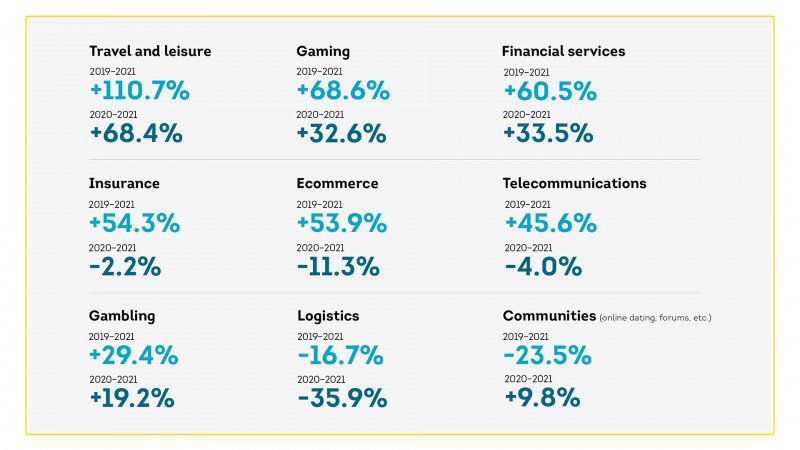Gaming sees largest US annual digital fraud growth in 2021 at 60% YoY

TransUnion, a global information and insights company, on Tuesday released its 2022 Global Digital Fraud Trends Report, which found that the gaming industry saw the largest percentage of annual fraud growth in 2021 in the United States, with an increase of 60.3% year-over-year.
Globally, the suspected digital fraud rate for Gaming —which in this study encompasses video games and online role-playing— grew 68.6% between 2019–2021, and 32.6% between 2020–2021. Gambling saw lower increases, with 29.4% and 19.2%, respectively.
In 2021, gold farming was the top fraud type for gaming where in-game resources are harvested and sold for real money. For gambling, fraud attempts predominately came from policy / license agreement violations where the user violates the site’s stated policies or end-user license agreement of the operator that could include game abuses such as collusion.

"Quite simply, fraudsters follow the money, and the gaming industry has seen substantial growth over the past two years as people are going out less and looking for alternative forms of entertainment," Shai Cohen, Senior Vice President of TransUnion Global Fraud Solutions, tells Yogonet. "The uptick in gaming fraud particularly came from 'gold farming'. The report found that this was most common in the United States as well as countries like Canada, Colombia and Puerto Rico. However, it is not as frequent in countries like South Africa and the United Kingdom which may have affected the global percentage."
Cohen further explains that, as digital technologies continue to evolve, robust fraud detection and identity verification solutions with strong authentication processes are key to effectively mitigating fraud in the digital world.
When asked about his outlooks for 2022 in these areas, the TransUnion expert says: "We commonly see that as new industries and technologies attract bad actors looking to exploit potential weaknesses – especially if that’s where consumers are spending both time and money. It’ll be important for companies to think through the player journey, identify areas of potential exploit and deploy robust and multi-layered fraud and identity protections to secure the player experience."

As consumer adoption of digital channels has continued to accelerate, the global rate for all types of suspected digital fraud attempts increased 9.4% YoY from 2020 to 2021 and 52.2% from 2019 to 2021. Globally, financial services, and travel and leisure ranked as the top two industries with the largest growth in the rated of suspected digital fraud attempts. Digital fraud in the travel and leisure sector saw the greatest YoY increase and grew 68.4% with credit card fraud as the predominant type – which is where a customer uses a fake or stolen credit card for a purchase, resulting in a chargeback to the site.
Specific country and regional data in the report include the United States, Brazil, Canada, Chile, Colombia, the Dominican Republic, Hong Kong, India, Kenya, Mexico, the Philippines, Puerto Rico, South Africa, Spain and the United Kingdom. TransUnion came to its conclusions about fraud against businesses based on intelligence from billions of transactions and more than 40,000 websites and apps contained in its flagship identity proofing, risk-based authentication and fraud analytics solution suite – TransUnion TruValidate. The percent or rate of suspected digital fraud attempts are those that TruValidate customers either denied or reviewed due to fraudulent indicators compared to all transactions it assessed for fraud.
















